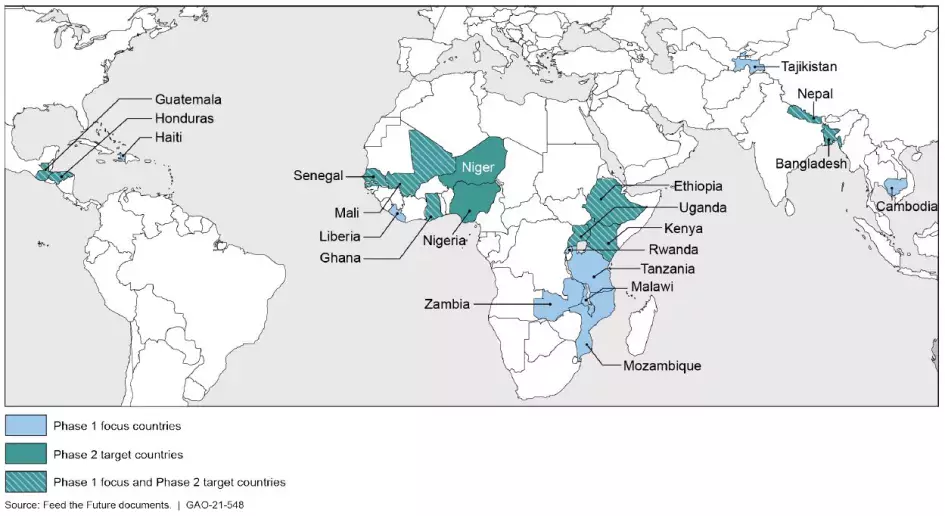Billions to Help Fight Hunger Worldwide—But Is this Initiative Meeting its Goals?
Global food security is an urgent problem. Nearly 690 million people in the world were undernourished in 2019, according to the United Nations. The UN also projects that this number could continue to increase due to the COVID-19 pandemic.
Since 2010, the U.S. Agency for International Development (USAID) has led the Feed the Future initiative, which aims to address long-standing problems with global food insecurity. In today’s WatchBlog post, we look at our new report on Feed the Future and our recommendations for improving this effort.
What is Feed the Future and how does it monitor its performance?
Feed the Future (FTF) provides nonemergency global food security assistance, and is aimed at improving agricultural practices, strengthening resilience, and increasing nutrition. In addition to USAID, 11 other federal departments and agencies—including USDA, Treasury, and Peace Corps—provide various resources and expertise to FTF. For example, USDA has programs that support child nutrition and provide technical assistance to farmers. Treasury contributes funding to multilateral institutions to support their food security activities.
Examples of Feed the Future’s Agriculture, Resilience, and Nutrition Projects
Image

From fiscal years 2012 to 2020, FTF has provided more than $18 billion in aid through its activities. USAID and its federal partners established a set of indicators to monitor FTF’s progress. For example, an indicator can provide information on FTF’s activities, such as the number of individuals participating in U.S. food security programs. Indicators also can provide data on the countries and regions in which FTF has prioritized its food security efforts, such as on the prevalence of moderate and severe food insecurity in the population.
Feed the Future Countries for Phase 1 (2010-2016) and Phase 2 (2017-present)
Image

How effective is FTF’s performance monitoring?
USAID and its federal partners are limited in their ability to assess and report the results of FTF’s efforts because the initiative does not have performance goals or indicators with FTF-wide targets.
Specifically, performance goals should measurably show what outcomes the initiative is trying to achieve. Without performance goals, FTF cannot determine how the results of its activities contribute to its overall aims, like reducing global hunger, malnutrition and poverty. In addition, only a handful of indicators have FTF-wide targets (expected results), which makes it hard to assess if FTF’s actual results are meeting expectations.
Overall, without performance goals and targets, FTF, Congress, and the public do not have the needed information to understand the initiative’s progress toward addressing food insecurity globally.
In our new report, we made 8 recommendations to USAID to improve FTF’s performance monitoring and reporting. For example, we recommended that FTF have measureable performance goals, set FTF-wide targets for any indicators used across the initiative, and include those targets in FTF’s public progress reports.
Find out more about how FTF can improve its performance monitoring by checking out our new report.
Want to learn more about our work on global food security? Here is our key issues page on International Food Assistance, which includes our interactive map on global food security assistance.
- Comments on GAO’s WatchBlog? Contact blog@gao.gov.
Related Products

GAO's mission is to provide Congress with fact-based, nonpartisan information that can help improve federal government performance and ensure accountability for the benefit of the American people. GAO launched its WatchBlog in January, 2014, as part of its continuing effort to reach its audiences—Congress and the American people—where they are currently looking for information.
The blog format allows GAO to provide a little more context about its work than it can offer on its other social media platforms. Posts will tie GAO work to current events and the news; show how GAO’s work is affecting agencies or legislation; highlight reports, testimonies, and issue areas where GAO does work; and provide information about GAO itself, among other things.
Please send any feedback on GAO's WatchBlog to blog@gao.gov.



